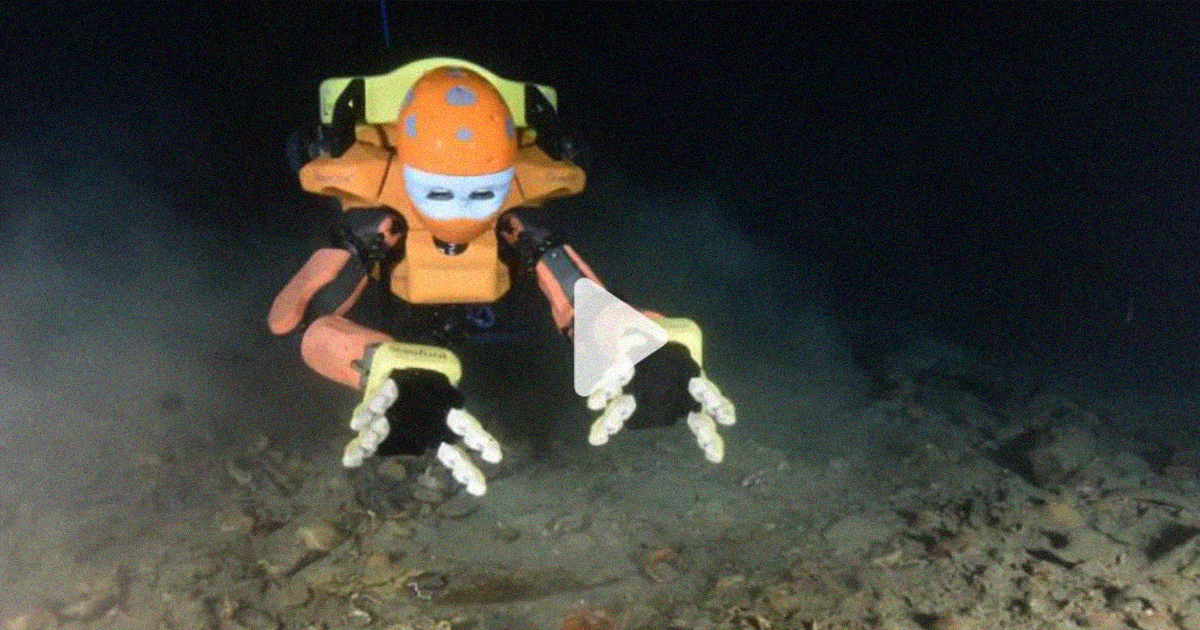How do you explore the sunken depths of the ocean where it’s unsafe for human divers to venture? By building a creepy looking robot guy with a "human" sense of touch, of course.
Created by scientists at Stanford University, the humanoid robot, named OceanOneK, just wrapped up another underwater expedition last month.
And that’s just one of many, having explored everything from sunken submarines to airplane wrecks, as CNN reported over the weekend.
At only five feet long, the feature-packed guy is amazingly capable — despite its terrifying appearance.
Built to resemble a human diver, OceanOneK has remotely controllable arms and hands, eyes capable of 3D vision, and a haptic feedback system that lets the operator safely feel the pressure and resistance of the water — and even objects.
"You are moving very close to this amazing structure, and something incredible happens when you touch it: You actually feel it," said Oussama Khatib, director of the Stanford Robotics Lab, in a press release, describing his experience using the robot to explore a sunken steamship.
Incredibly, the robot’s AI brain can intuit the force necessary to interact with objects without damaging them — which is extremely important if you want to use OceanOneK to recover rare artifacts.
In short, the robot makes for a much more immersive diving experience compared to more conventional, remotely operated underwater vehicles (ROVs).
At depths human divers could only dream of, OceanOneK remains incredibly resilient, and has been demonstrated to withstand pressure levels at nearly 3,280 feet below the surface.
Still, like any robot, OceanOneK has its fair share of maintenance problems, including disabled arms and failing to resurface properly.
But scientists have always managed to get the robot up and running again.
"It requires a lot of out-of-the-box thinking to make those solutions work," Stanford doctoral student and team member Wesley Guo told CNN.
OceanOneK debuted in 2016 with its exploration of King Louis XIV’s sunken ship, and its team has been working on improvements ever since. Recently, the robot placed a camera inside a wrecked steamship and retrieved artifacts from the watery grave of an ancient Roman vessel.
The talented diver may even have an upcoming successor set for space. Khatib told CNN that the European Space Agency has expressed interest.
"They can interact with the robot deep in the water," Khatib added, "and this would be amazing because this would simulate the task of doing this on a different planet or different moon."
More on robots: Scientists Create Robot "Finger" With Living Skin That Looks Like, Um
Share This Article
